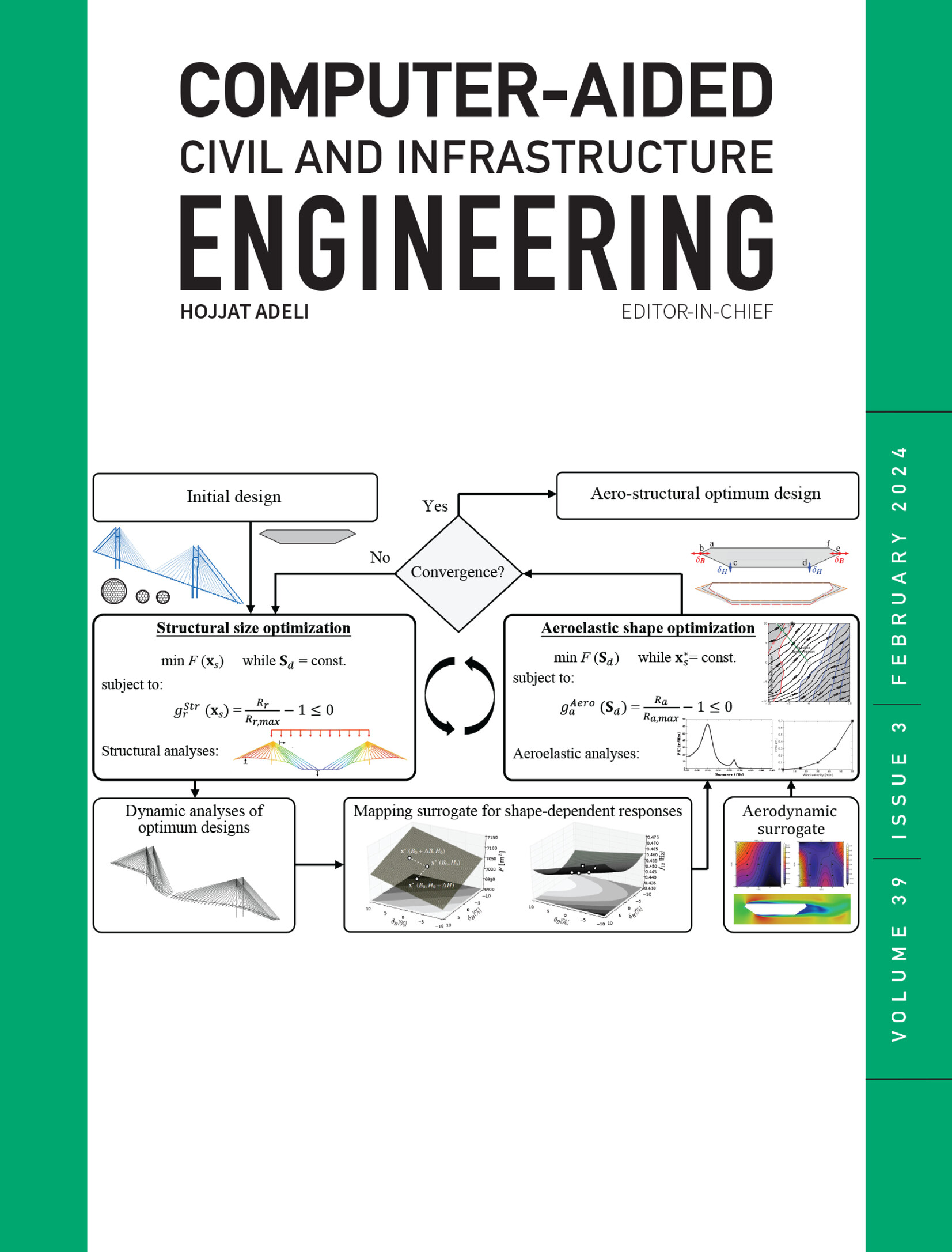结合持续学习和图卷积扩散算法的中心差分注意多模态分割网络用于复杂道路裂缝分割
IF 9.1
1区 工程技术
Q1 COMPUTER SCIENCE, INTERDISCIPLINARY APPLICATIONS
引用次数: 0
摘要
在复杂的场景中,车辆和交通标志的存在对道路裂缝检测提出了重大挑战。为了解决这些问题,本文将图像和文本信息相结合,提出了一种新的跨模式道路裂纹检测模型CDGC - TNet。该模型使用经典的编码器-解码器结构进行图像特征提取,使用BERT‐VisTrans文本特征提取器进行文本特征提取。首先,采用中心差分注意模块处理复杂背景干扰;其次,采用图扩散深度传播算法解决细裂纹分割问题。最后,我们采用一种基于灵活记忆融合的连续学习机制来解决模型中的灾难性遗忘问题。通过在多个公共数据集上的实验验证,CDGC - TNet在所有指标上都优于现有的10种先进的裂缝分割网络,表现出优异的性能和良好的泛化能力。实际道路场景的测试进一步证明了该方法的有效性,为道路安全检测提供了一种高效、可靠的辅助工具。本文章由计算机程序翻译,如有差异,请以英文原文为准。
A central difference attention multi‐modal segmentation network integrating continual learning and graph convolution diffusion algorithms for complex road crack segmentation
The presence of vehicles and traffic signs in complex scenarios poses significant challenges for road crack detection. To address these challenges, this paper integrates image and text information and proposes a new cross‐modal road crack detection model, CDGC‐TNet. The model uses a classic encoder–decoder structure for image feature extraction and BERT‐VisTrans text feature extractor for text feature extraction. First, the centered difference attention module is employed to deal with complex background interference. Second, the graph diffusion depth propagation algorithm is used to address the issue of fine cracks in segmentation problems. Finally, we employ a continuous learning mechanism based on flexible memory fusion to address catastrophic forgetting in the model. Through experimental validation on multiple public datasets, CDGC‐TNet outperforms 10 existing advanced crack segmentation networks in all metrics, demonstrating excellent performance and good generalization ability. Tests in real‐world road scenarios further prove the effectiveness of the proposed method, which can provide an efficient and reliable auxiliary tool for road safety detection.
求助全文
通过发布文献求助,成功后即可免费获取论文全文。
去求助
来源期刊
CiteScore
17.60
自引率
19.80%
发文量
146
审稿时长
1 months
期刊介绍:
Computer-Aided Civil and Infrastructure Engineering stands as a scholarly, peer-reviewed archival journal, serving as a vital link between advancements in computer technology and civil and infrastructure engineering. The journal serves as a distinctive platform for the publication of original articles, spotlighting novel computational techniques and inventive applications of computers. Specifically, it concentrates on recent progress in computer and information technologies, fostering the development and application of emerging computing paradigms.
Encompassing a broad scope, the journal addresses bridge, construction, environmental, highway, geotechnical, structural, transportation, and water resources engineering. It extends its reach to the management of infrastructure systems, covering domains such as highways, bridges, pavements, airports, and utilities. The journal delves into areas like artificial intelligence, cognitive modeling, concurrent engineering, database management, distributed computing, evolutionary computing, fuzzy logic, genetic algorithms, geometric modeling, internet-based technologies, knowledge discovery and engineering, machine learning, mobile computing, multimedia technologies, networking, neural network computing, optimization and search, parallel processing, robotics, smart structures, software engineering, virtual reality, and visualization techniques.

 求助内容:
求助内容: 应助结果提醒方式:
应助结果提醒方式:


